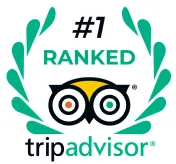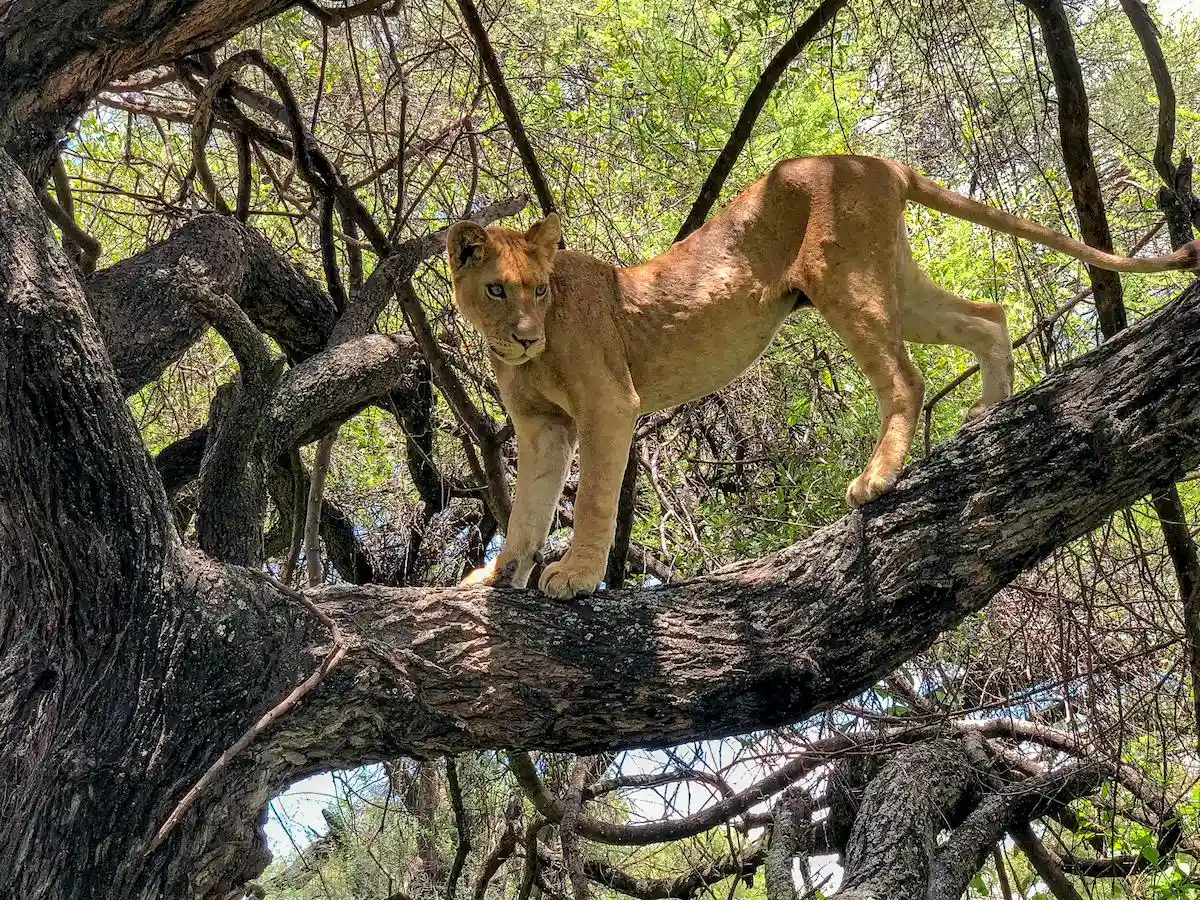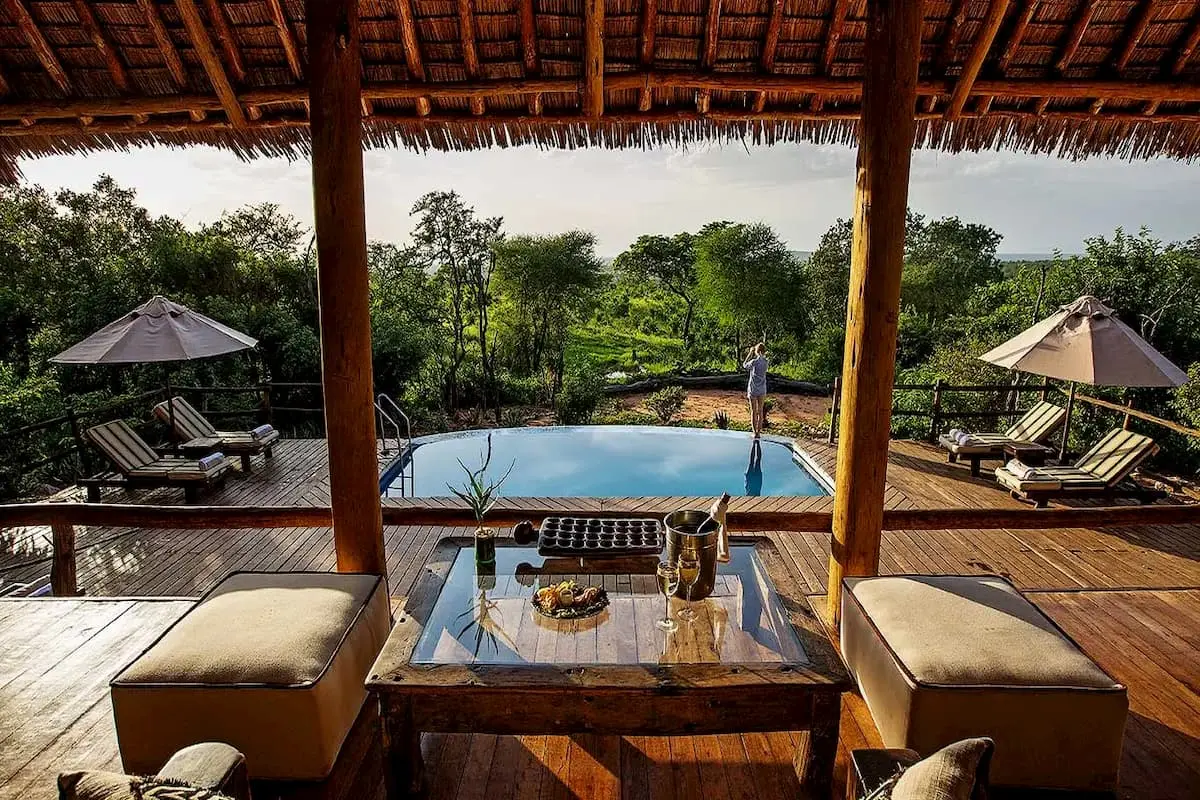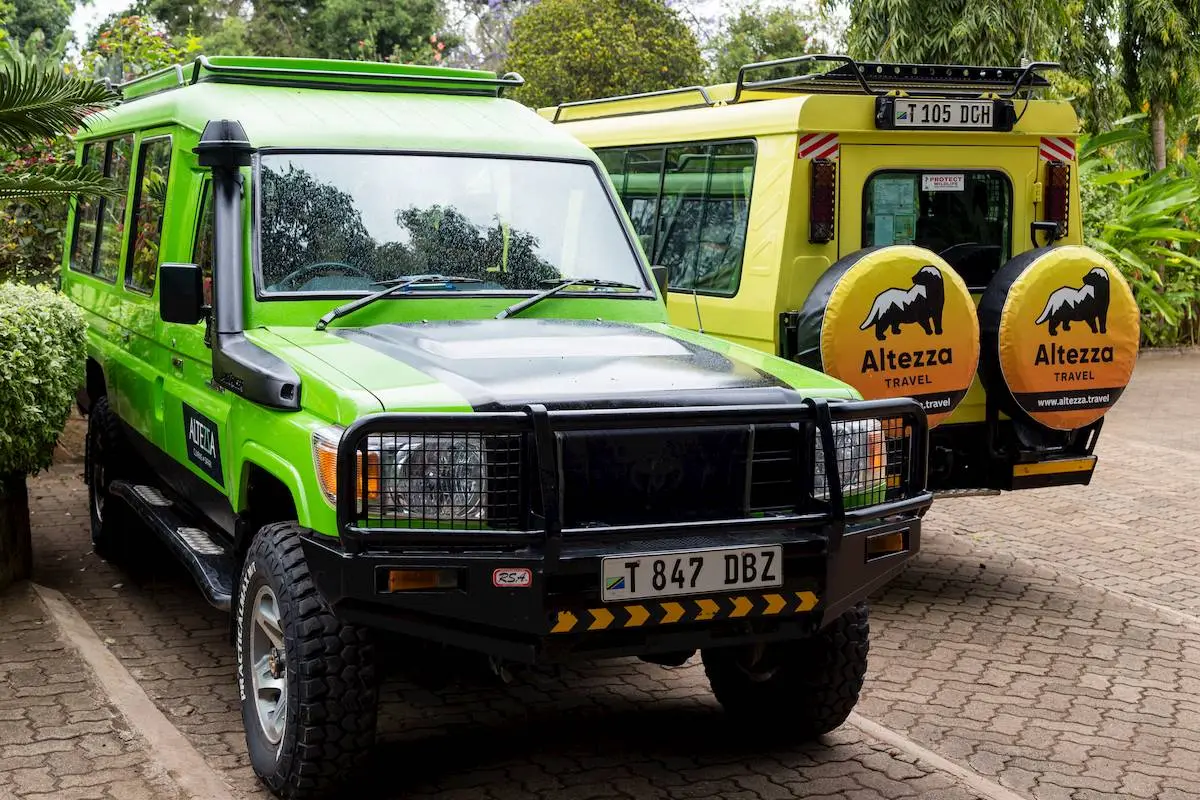
Tanzania Safari Cost
Ever wondered what the safari prices are made of? This article explains how the tour operators in Tanzania make them up and why the trips to this country are often more expensive than those to the neighboring destinations - and why they are better.
Tanzania offers the best safaris in the world. Again and again, Tanzania wins tourism awards for its incredible national parks. Being the best also means that Tanzanian safaris are the most expensive within East Africa.
While neighboring East African countries may offer general wildlife viewing safaris, only Tanzania has the Serengeti, Ngorongoro Crater and Zanzibar. Tanzania has the highest population of elephants in the region and the highest mountain in Africa, Mount Kilimanjaro.
One of the reasons for the elevated cost is that Tanzania offers unique attractions found nowhere else in the world. There are several other contributors to the overall price of safaris in Tanzania, the most prominent being park entrance fees. These fees are set by the government and no tour operator is exempt from this per-client expense. Individual safari schedules, preferred parks and duration of the entire safari also have an influence on the overall price.
Tanzania Safari Types: Group, Private or Self-Drive?
There are three safari options in Tanzania: group safaris, private safaris and self-drive safaris. Let’s look at all three:
Group safaris
Group safaris are very popular in Tanzania. They offer the chance to attend a game drive in a vehicle that is full or nearly full. Guests sign up for a pre-scheduled safari program but do not personally know the other members of the safari with whom they will be sharing a vehicle. Most group safaris utilize camping or mid-range lodges for accommodations.
Group safaris offer the chance to participate in a game drive by compromising one’s individual schedule. The reason for choosing such is to reduce the price and spread the cost of the safari across all members of the tour, but could also be to make friends and meet new people during your adventure.
Some drawbacks of this option include different priorities of all group members, and time spent waiting for a larger group. A group of eight people will always take longer to finish up a meal, head out for the day or reach a long distance than a car with few people. A group must agree on which wildlife to prioritize, when to head to accommodations for the night, and what time to set out in the morning. If a group does not all have the same interests or priorities on safari then some members must sacrifice for a general consensus. This is one of the reasons we at Altezza do not organize group safaris; we want each individual guest to have the best experience on safari and not have to compromise on the adventure of a lifetime.
Private safaris
We believe that the best way to experience a Tanzanian safari is on a private tour. Whether it’s your honeymoon, a family vacation or a small group of your closest friends, a private safari offers the chance to meet all of your safari adventure dreams.
Travelling with people you know and who share common interests for your African safari means that your adventure not only meets your expectations - but can even surpass them. Further, the memories you create are multiplied because they are shared with loved ones.
Private safaris mean custom trips and no compromising on your interests or schedule. This is why Altezza Travel only offers private safaris to our clients. Our safari experts are ready to assist you in planning your own, private safari according to your unique dream vacation. You can modify each itinerary to suit your family’s needs, or create a program with special touches for a dream honeymoon. It is our belief that private safaris are the absolute best way to experience Tanzania.
Self-driven safaris
There is the option of self-renting a car and driving on your own to the national parks. However, this is not recommended for those unfamiliar with Tanzania for the following reasons:
- A safari is greatly enriched by the knowledge and wisdom of an experienced safari guide. Their trained eyes can spot an animal from a great distance, or determine how recently an elephant passed over the road. A guided tour means a wealth of knowledge and a more culturally-relevant experience in Tanzania.
- If you get lost without a guide, you may be in trouble! Driver-guides know the national parks very well; you will not lose time getting lost in the bush with a driver. This is even more important if you have vehicle trouble or a flat tire: if you have more serious car problems, tour companies usually send another car so you may continue your safari, but if you are self-driving you will be on your own to find a mechanic and a garage (which are not easy to locate in the remote park areas), and your safari will be on hold until the vehicle is repaired.
- Safari guides communicate through car radios to share when the Big Five are spotted. Unless you are a fluent Swahili speaker and know the local slang for animal names, you could miss out on seeing an elusive leopard without a guide.
- Self-driven safaris also mean self-organized. Not only will you spend a great deal of time planning and reading reviews to book your own accommodations, but you will also have to locate them all on your own! It is not an easy endeavor to drive through unmarked roads in remote areas of Tanzania to find your lodgings, and perhaps impossible to navigate if you are not a fluent Swahili speaker.
We at Altezza Travel confidently recommend private safaris for the best way to experience Tanzania. Our experts handle all of the booking details and can adapt each itinerary to suit individual interests so that guests can fully enjoy the safari experience.
Price factors for Tanzania safari
We recognize that Tanzanian safari prices are higher than neighboring countries. However, consider the size of Tanzania - it is the largest country in East Africa. It has a higher population of wildlife and more diversity in national parks. Park fees are one of the main factors for the overall higher price, but note that park fees contribute towards rangers, environmental conservation throughout the country and anti-poaching campaigns to protect endangered wildlife. Other contributors include lodging costs and tour operator costs.
Park fees
Yes, Tanzanian park fees are the highest, but Tanzanian parks are the best in East Africa. Check out Safari Bookings’ recent post naming Serengeti the Top Safari Destination in the World.
Some national parks throughout Tanzania have different fees. Serengeti, for instance, has a higher per-day fee than other parks, while Tarangire, Arusha National Park and Manyara all have the same entry fee.
Serengeti National Park and Ngorongoro Crater are UNESCO Heritage Sites. As such, specific approaches are taken to preserve nature in a manner that aligns with this designation, and the modest fee increase helps to cover these costs. These two destinations have higher fees as a result.
Some areas are designated Wildlife Management Areas and thus, park fees for these locations go towards the local authorities’ important work of caring for Tanzania’s incredible wildlife.
Hotel/lodging costs
A great safari experience includes staying at a lodge or hotel. Returning from a game drive to a beautiful room, enjoying a hot shower and relaxing on the veranda with a cool drink in-hand push a good day in the savannah to a great day on safari. However, there is an added cost to staying in a hotel or lodge and it makes up a great deal of the guest's overall safari price.
Why are Tanzanian lodges more expensive than other locations? It is common for meals to be inclusive of one’s accommodation fees, so the cost covers food, water and lodging, not just a night’s stay. The staff are usually specifically trained in hospitality and fluent in English.
These lodges offer top hospitality, pay employees a fair wage according to their higher education. Guests notice a higher price-point, but they may not automatically realize the direct link between their hotel bill and staff receiving a fair salary.
Further, hotels that operate in protected areas have to take more measures to ensure their minimal impact on the environment and sometimes pay additional fees. Therefore, guests pay a higher cost to stay in these specialty locations.
Vehicle fuel, maintenance, amortization (and other transportation)
Four-wheel drive Land Cruisers are essential for traveling to and through Tanzania’s national parks. Altezza’s safari cars are not only vehicles for travel, but we have outfitted them for comfort and enjoyment during game drives. In Altezza’s safari vehicles, guests have access to a mini-fridge for cool drinks, functioning outlets to charge devices or cameras, and even Wi-Fi internet!
Reputable companies, such as Altezza, do not push the life expectancy of safari vehicles. We drive them for around 10 years before we bring in fresh cars so that our guests are sure of the integrity of the vehicles. Regular maintenance is performed on all vehicles to ensure they are up to a high standard and surpass the minimum safety regulations.
A Land Cruiser on full-day safari uses approximately 40 liters of fuel each day.
Of course, for premium safaris with scheduled air travel in a bush plane is an additional cost, which is more expensive than driving by car. However, for those interested in an adventure by plane, there are few other locations in the world that offer such a spectacular experience, an aerial safari in nearly a ‘private flight’ for such a low cost, considering the incredible adventure.
Tour operators mark-up
Local, Tanzanian-based tour operators usually have a 15-25% commission, which is significantly lower than many Western agencies. The majority of this income goes toward running costs, applicable taxes, and staff salaries.
Duration of your safari
As to be expected, longer safaris do have a higher price. However, traveling during the low season usually means special discounts, and many hotels do offer appreciable discounts for prolonged stays. The attraction of longer safaris is that travelers can explore Tanzania to the fullest.
So, how much does a safari cost in Tanzania?
The final price of a Tanzanian safari is dependent on duration, the number of parks visited, activities and type of safari. There are three types of safaris offered in Tanzania, budget, mid-range, luxury or premium, which are divided based on the level of service and type of accommodation.
Budget (camping) safaris
Camping in national parks is permitted at designated camp sites, or outside of the national parks by privately-run sites. Visitors travel with either their own tents and supplies or rent from local tour operators. A cook will accompany the tour to prepare meals during the safari, as well as pack all of the food needed for the duration of the safari. These necessities must be carried in the safari vehicle, or on top, making the vehicle quite crowded or limiting the option of raising up the convertible roof for a better view of wildlife. At campsites, all facilities are shared by other campsite users and are usually very basic.
While some budget safaris often seek to cut costs by operating old vehicles and offering basic food menus, there are others who do a great job of organizing discount adventures. If you are prepared to do a bit of research regarding each operator, and don’t mind an adventure featuring basic amenities then you can enjoy a great, simple African safari for less.
Classic (midrange) safaris
Classic safaris are the most popular choice of Altezza clients. These trips combine a wonderful level of comfort from our specially-selected hospitality providers. We personally ensure the quality of the hotels and lodges we recommend, as we visit them annually. The accommodations we use offer excellent food, wonderful scenery, and amenities such as internet and swimming pools for guests’ comfort and enjoyment.
Altezza has a team of top guides and clients receive a high standard of guiding for the duration of their safari. Our guides are fluent in English and excellent and safe drivers who really know Tanzania and its wildlife.
It is our opinion that the Class Safari is what the majority of travelers to Tanzania are really seeking: guests experience the absolute best of Tanzania in comfort, for a reasonable price.
Luxury safaris
Luxury Safaris go the extra mile to ensure an exquisite experience. Hotels and lodges are located in some of the most picturesque locations with special features such as private pools or saunas. Service standards and meals at these locations are superior to midrange safaris.
These safaris often include special activities and excursions, such as hot-air balloon rides over the Serengeti or riding horses in Arusha National Park. Of course, Luxury Safaris are a much more expensive option for touring Tanzania.
Premium safaris
Premium safaris allow guests to experience award-winning hospitality, such as the Four Seasons, Sasaqwa Singita, or andBeyond: companies extolled by international travel magazines. A Premium safari in Tanzania could be the most incredible trip of one’s life. This option is the top tier of travel in Tanzania, but is also by far the most expensive, at an average of USD 800 per night.
Some accommodations on premium safaris are located on private game reserves where only clients of the private company are allowed to enter. This makes for a truly exceptional experience.
Private chartered flights are an important part of a premium safari. Flights allow clients to see more of Tanzania in a short amount of time, by air travel from the Serengeti in Northern Tanzania to the Mahale Mountains in Western Tanzania, for example.
While all of this sounds incredible, the cost can inhibit some travelers from experiencing this type of travel. Premium safaris are exclusive and not popular for the majority of visitors to Tanzania.
Trip to Tanzania: Some other costs explained
Not included in your safari package are the following:
- Airfare and baggage fees.
- Entry visas to enter Tanzania. The cost varies based on your country of citizenship, but is 50 USD for most European and Candian travelers and is 100 USD for American citizens. Please see the official Tanzanian government page for details, here.
- Tips for your safari driver. In Tanzania it is customary to tip a guide at the end of a safari, to show appreciation for his or her work. 30 - 50 USD is our recommendation, which can be divided among all members of the safari vehicle.
Frequently Asked Questions
Serengeti National Park is the most famous, the most fascinating, and the most expensive park in Tanzania.
It is recommended that tourists visit this UNESCO World Heritage Site, but that they take advantage of visiting other Northern Tanzanian attractions as they travel toward the Serengeti. This park is located nearly 4000 kms from the city of Arusha, and travelers will pass near Ngorongoro, Tarangire and Manyara National Parks on their way to the Serengeti by road.
There is an option for a chartered flight, and for those who prefer to save time or have an aerial experience, bush aviation can be a great adventure that lands travelers right in the Serengeti without long road travel.
While other parks’ daily entrance fees are approximately 50 USD including applicable taxes, Serengeti National park is nearly 70 USD per person. Travel to reach the Serengeti further contributes to a higher price point for Serengeti safaris. But, keep in mind, this is a world-renown, international award-winning national park and is a once-in-a-lifetime experience.
For tourists flying from Europe, many airlines offer flights to Kilimanjaro International Airport from USD 500 - 1000 (economy class). Consider KLM, Turkish Airlines, Fly Dubai and Ethiopian Airlines for economical flights. Qatar Airways and Lufthansa offer wonderful service but are sometimes more expensive.
North American travelers will most likely have a layover in a European city (such as Amsterdam), Turkey or Ethiopia, and sometimes have a brief stop in Nairobi or Dar es Salaam on their way to Kilimanjaro Airport. This longer flight usually means a higher air travel cost, but also provides the opportunity to visit various locations, if travelers extend layovers.
Tanzania is a larger country than Kenya and more space has been set aside as protected areas. A safari in Tanzania means more wildlife and overall more internationally acclaimed sites (Ngorongoro Crater, Serengeti, Lake Natron, Empakai, and Gombe Stream National Park).
Parks in Kenya are more crowded than in Tanzania because they are smaller and have fewer animals, meaning that the safari cars crowd around animals when they are spotted. These are some of the reasons why safaris in Kenya are available for a lower price. For a premium experience, Tanzania offers more protected areas and overall more wildlife, but for a higher price.
It is advisable to have an assortment of cash and credit or debit cards for your safari. This money helps go towards meals or drinks not included in your program, souvenirs, and the guide’s tip. Review your itinerary regarding which meals are included at your accommodations to determine if, and how many meals you should budget for.
Keep in mind that each hotel takes a different approach to freshly squeezed juices and alcoholic beverages; while some are included in your stay, others charge separately for drinks. It truly is so relaxing to enjoy a cool drink or rich wine in the evening while on safari, so we highly recommend including a few extra beverages in your budget.
Many hotels offer souvenir shops so you take a physical memory of your travels home. Alternatively, you can also attend a large handicraft market to browse even more gifts to share with coworkers or family. These locations prefer cash, so make sure to have some extra on hand.
Please estimate 30 to 50 USD a day for your safari driver to show your appreciation. Remember your driver-guide is working anywhere from 16 to 18 hours a day, including behind the scenes, to ensure vehicle upkeep and planning the next day’s adventure.
High Season (from late December to early March and late June to early September) offers incredible scenery and unbeatable weather. Wildlife behavior is usually predictable during this time: watering holes or animal movement allow tourists to more easily see the Big Five or their other favorite animals. However, high season means a large number of tourists and some parks and lodges may be crowded.
The June-September High season is often the period of the Serengeti Migration and offers tourists the chance to see millions of animals crossing the Mara River into Tanzania. However, expect accommodations around the Serengeti to be quite congested.
Some tourists find they enjoy the rainy season (November to early December and late March to early June), despite the wet weather. This time of year is lush and green and wildlife abounds. Photographers may even spot some animals being playful, such as elephants splashing in a swamp. For those who prefer a quieter, more secluded adventure, there are significantly fewer tourists in the national parks and at lodges during this time. Also, some accommodations offer discounts during low-season, which is another incentive to visit Tanzania during the rains.
Our Reviews






















